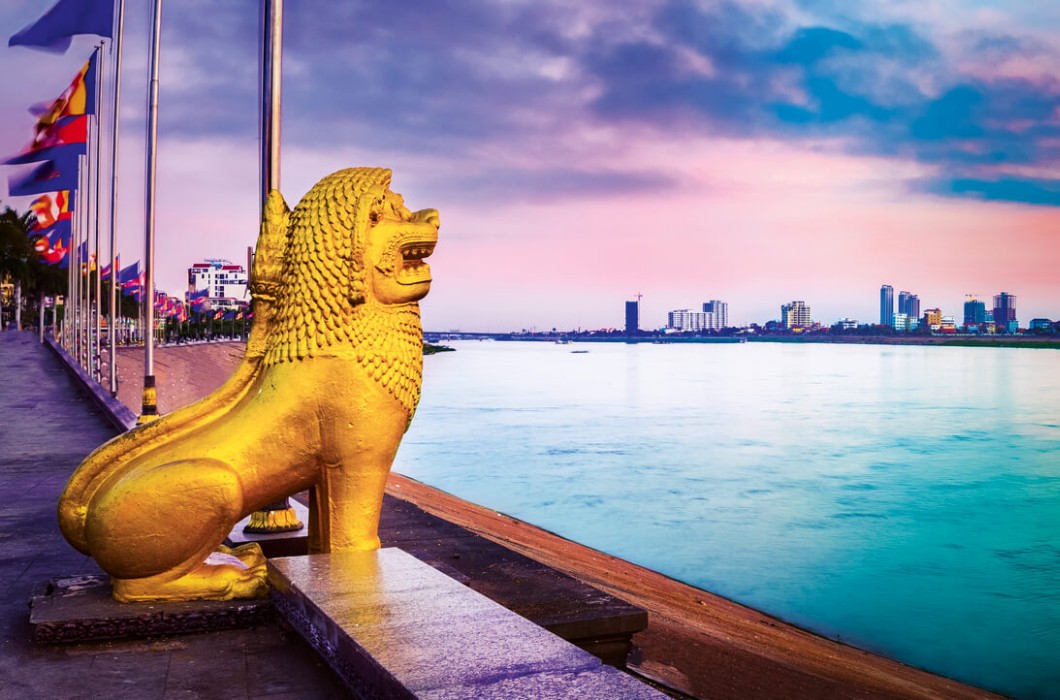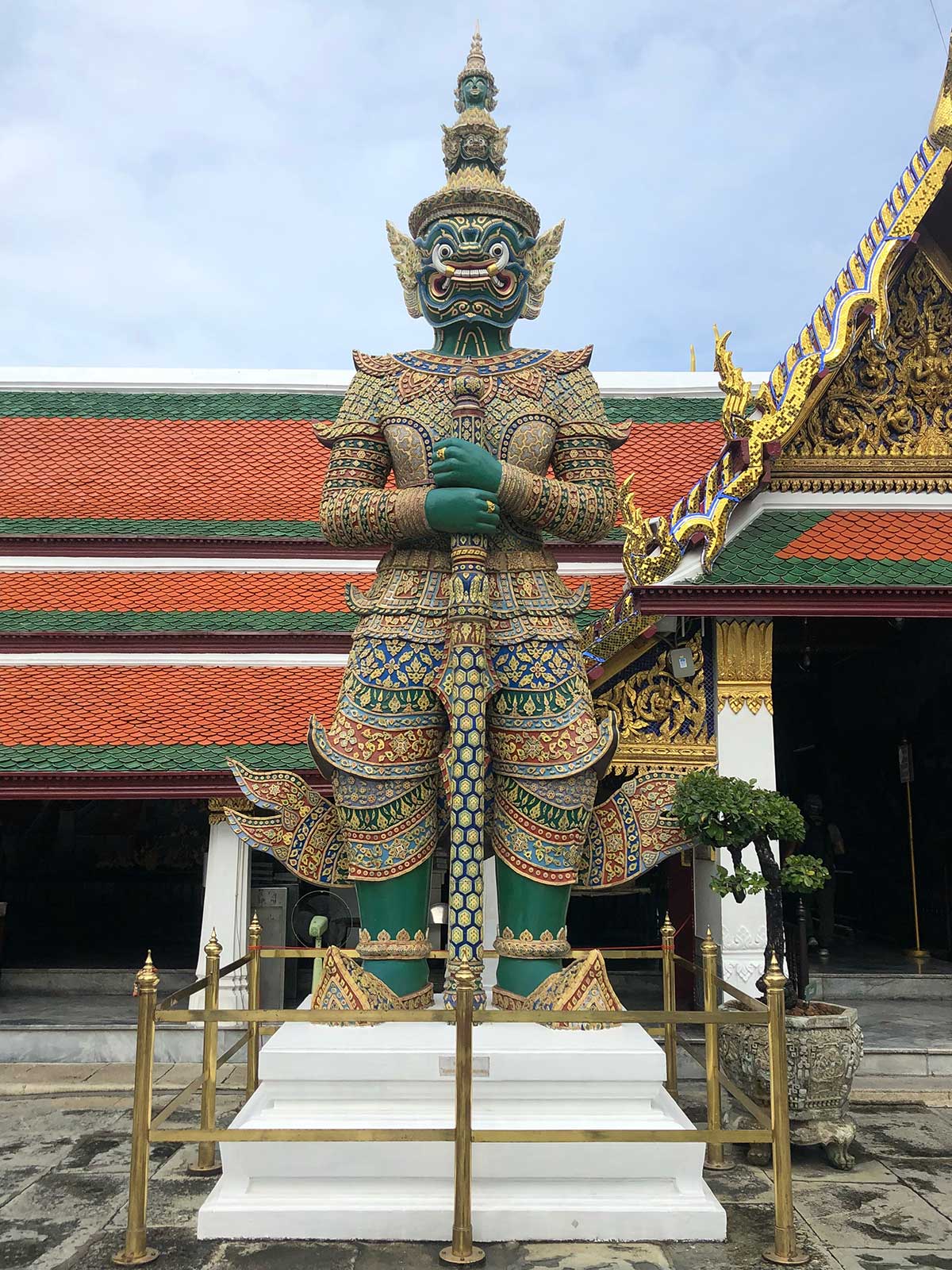Golden Glory: Unveiling Cambodia's Royal Palace
The History and Significance of Cambodia's Royal Palace
Introduction to Cambodia's Royal Palace
The Royal Palace is a prominent cultural landmark in Cambodia, serving as the official residence of the King of Cambodia. Located in the capital city of Phnom Penh, it is a symbolic representation of the country's rich history and heritage. The Royal Palace is not only a place of residence but also serves as a venue for important ceremonies and events.
Historical background and cultural significance of the Royal Palace
The Royal Palace was constructed in 1866 during the reign of King Norodom. It was designed by renowned architect Neak Oknha Tepnimith Mak. The palace has undergone several renovations and expansions throughout its history while preserving its original architectural charm.
The Royal Palace holds great cultural significance as it is a testament to Cambodia's monarchy and represents the nation's unity and pride. The stunning Khmer architectural style, characterized by intricate carvings and vibrant colours, showcases the country's unique cultural heritage.
One of the main attractions within the Royal Palace complex is the Silver Pagoda, also known as Wat Preah Keo. This magnificent temple houses the statue of the Emerald Buddha, which is made entirely of solid gold and encrusted with thousands of diamonds. The Silver Pagoda is a sacred place of worship and is highly revered by Cambodians.
Another significant feature of the Royal Palace is the Throne Hall, which serves as the venue for royal ceremonies and official events. The Throne Hall is a grand structure decorated with exquisite artwork and finely crafted furniture fit for royalty.
Cambodia's Royal Palace holds immense historical and cultural significance. It represents the country's monarchy and serves as a symbol of national pride. The architectural beauty and religious artefacts within the palace complex make it a must-visit tourist attraction and a source of inspiration for Cambodians.

Architecture and Design of the Royal Palace
Overview of the architectural style
The Royal Palace in Cambodia showcases the unique Khmer architectural style, renowned for its intricate details and vibrant colours. Advanced building techniques and exquisite craftsmanship characterize this style. The combination of these factors creates a visually striking and culturally significant landmark.
Key features and design elements of the Royal Palace
The Royal Palace complex consists of several structures that highlight the grandeur and elegance of the Khmer architectural style. Some of the key features include:
- The Silver Pagoda: This sacred temple, also known as Wat Preah Keo, is adorned with silver tiles that give it its name. Inside, you will find the Emerald Buddha, a stunning statue made entirely of solid gold and studded with precious stones, including diamonds.
- The Throne Hall: This grand structure is the royal ceremonies and official events venue. It is decorated with intricate artwork and luxurious furniture fit for royalty.
- The Moonlight Pavilion: Situated within the palace grounds, this pavilion is a prime example of graceful Khmer architecture. Its open design allows for optimal ventilation and a picturesque view of the surrounding gardens.
These architectural elements not only showcase the skill and craftsmanship of the Khmer people but also reflect the cultural and religious values held in high esteem in Cambodia.
Overall, the Royal Palace is a testament to Cambodia's rich history and a symbol of the nation's unity and pride. Its architectural beauty and cultural significance make it an essential landmark for exploring Phnom Penh.

The Majestic Throne Hall
History and purpose of the Throne Hall
Step into the magnificent Throne Hall within the Royal Palace complex, and you'll be transported back to an era of royal grandeur. This iconic structure has played a significant role in Cambodia's history and symbolises the nation's rich cultural heritage.
The Throne Hall was built in the 19th century during the reign of King Norodom and has since been utilized for various royal ceremonies and official events. It serves as a testament to Cambodia's enduring monarchy and is a place where its leaders make important decisions and host dignitaries worldwide.
Intricate details of the Throne Hall's interior and exterior
As you enter the Throne Hall, prepare to be awe-struck by its exquisite design and intricate details. The exterior facade showcases the classic Khmer architectural style, with ornate carvings and golden accents that catch the sunlight beautifully.
Inside, the opulence continues with elaborate artwork adorning the walls and luxurious furniture fit for royalty. The painstaking craftsmanship is evident in every corner, from the intricately carved wooden pillars to the grand chandeliers hanging from the ceiling.
The Throne Hall's interior also houses thrones adorned with gold and precious gems, further emphasizing its importance as a seat of power. The grand scale and meticulous attention to detail make this a remarkable Khmer architecture masterpiece.
Visiting the Majestic Throne Hall is a truly unforgettable experience. The combination of its rich history, stunning design, and cultural significance make it an essential stop for anyone seeking to explore the beauty and heritage of Cambodia.

The Silver Pagoda: A Jewel within the Royal Palace
Background and Significance of the Silver Pagoda
Step into the enchanting Silver Pagoda, nestled within the grounds of the Royal Palace, and be captivated by its beauty and historical significance. This revered pagoda holds a special place in Cambodian culture and is a testament to the country's rich spiritual heritage.
The Silver Pagoda, also known as the Temple of the Emerald Buddha, was constructed in the 19th century during the reign of King Norodom. It is named after the 5,329 silver tiles that cover its floor, giving it a shimmering silver glow. The pagoda has many sacred artefacts, including a stunning gold Buddha statue adorned with diamonds and emeralds.
Ornate decorations and valuable treasures housed in the Silver Pagoda
Inside the Silver Pagoda, be prepared to be amazed by the opulent decorations and treasures on display. The walls are adorned with intricate murals depicting scenes from Buddhist mythology and Cambodian history. The ceiling is adorned with colourful frescoes, adding to the visual splendour of the pagoda.
The highlight of the Silver Pagoda is undoubtedly the breathtaking Emerald Buddha, a small statue made of solid gold and embellished with over 9,000 diamonds. This precious artefact is believed to have protective powers and is highly revered by Cambodians.
In addition to the Emerald Buddha, the pagoda houses other valuable treasures, including a life-sized Buddha statue encrusted with 2,086 diamonds and a solid gold Buddha statue weighing 90 kilograms. These priceless artefacts showcase the Cambodian people's religious devotion and artistic mastery.
Visiting the Silver Pagoda is a remarkable experience, offering a glimpse into Cambodia's rich spiritual and cultural heritage. The intricate decorations, valuable treasures, and historical significance make this a must-visit destination for anyone interested in exploring the wonders of Cambodia's royal history.

The Emerald Buddha: A Sacred Relic
History and symbolism of the Emerald Buddha
As you step into the awe-inspiring Silver Pagoda, you will encounter a sight that will leave you speechless – the magnificent Emerald Buddha. This sacred relic has a rich history and is significant to Cambodian culture. Crafted in the 19th century during King Norodom's reign, the Emerald Buddha is a testament to the country's spiritual heritage.
The Emerald Buddha is named from the stunning green emerald carved from, showcasing exquisite craftsmanship. The statue is encrusted with thousands of diamonds, adding to its beauty and symbolism. It is believed to possess protective powers and is highly venerated by the Cambodian people.
Rituals and practices associated with the Emerald Buddha
Within the Silver Pagoda, the Emerald Buddha is the centrepiece of various rituals and practices conducted to honour and show reverence to this sacred relic. Monks and devotees gather in the pagoda to offer prayers, light incense, and offerings to the Buddha.
One such ritual is pouring holy water over the statue, symbolizing the cleansing of sins and the renewal of spiritual purity. This ritual accompanies chanting and meditation, creating a serene and spiritual atmosphere. Many believe participating in these rituals brings blessings, prosperity, and protection.
Visiting the Silver Pagoda and experiencing the magnificence of the Emerald Buddha is a truly extraordinary experience. The rich history, symbolism, and devotion associated with this sacred relic offer a deep insight into Cambodian spirituality and culture. Make sure to include this remarkable destination on your itinerary if you are fascinated by history, art, and the wonders of the royal past.
The Queen's Palace: A Symbol of Grace and Elegance
Overview of the Queen's Palace
As you enter the majestic grounds of the Queen's Palace, you will be transported to a world of grace and elegance. This architectural marvel symbolises the royal heritage and serves as the queen's residence. With its intricate design and breathtaking beauty, the Queen's Palace is a testament to Cambodian architecture's grandeur.
The Queen's Palace holds great cultural significance and symbolises the country's rich history. It has been a central hub for royal activities and important ceremonies for centuries. Lush gardens surround the palace complex, adding to its serene ambience.
Architectural highlights and unique features of the Queen's Palace
The Queen's Palace showcases remarkable architectural brilliance with Khmer, Thai, and French influences. Its main building, the Throne Hall, is an architectural masterpiece adorned with intricate carvings and golden accents. The Throne Hall serves as a venue for important royal ceremonies and state functions.
The Queen's Palace is also home to the Royal Residence, where the queen resides. This opulent structure features traditional Cambodian architecture, with intricate latticework and vibrant colours. The inner chambers of the Royal Residence are adorned with precious artwork and valuable artefacts that showcase the country's cultural heritage.
Visiting the Queen's Palace offers a glimpse into Cambodia's regal history and its royalty's refined taste. The elegant architecture and serene atmosphere create a sense of tranquillity, allowing visitors to immerse themselves in the country's rich cultural heritage.

The Inner Court and Royal Residences
Introduction to the Inner Court and its purpose
You will discover a hidden world of royal splendour once you enter the Inner Court of the Queen's Palace. This exclusive area of the palace complex is reserved for the royal family and their close associates. It serves as the private sanctuary where the queen and her family can retreat from the public eye and enjoy moments of tranquillity.
The Inner Court holds great significance in the royal history of Cambodia. It is a place where important family gatherings and intimate ceremonies take place. Surrounded by high walls, this secluded space offers a sense of privacy and exclusivity, allowing the royal family to immerse themselves in their personal lives fully.
Notable royal residences within the Inner Court
Within the Inner Court, you will find an array of magnificent royal residences that reflect the country's rich cultural heritage. Let's explore some of the notable ones:
| Residence | Architecture | Features |
|---|---|---|
| The Royal Residence | Traditional Cambodian | Intricate latticework, vibrant colours |
| The Queen's Chamber | Elegant and refined | Exquisite furnishings, artwork |
| The Prince's Residence | Blend of classic and contemporary | Spacious gardens, private courtyard |
The Royal Residence, where the queen resides, is a sight to behold. Its traditional Cambodian architecture, adorned with intricate latticework and vibrant colours, represents the country's artistic heritage. The inner chambers showcase priceless artwork and valuable artefacts that glimpse the royal family's refined taste.
The Queen's Chamber, on the other hand, exudes elegance and refinement. With its exquisite furnishings and curated collection of artwork, it serves as a personal haven for the queen. Here, she can relax and unwind amidst the beauty of her surroundings, creating a space that reflects her impeccable style and taste.
The Prince's Residence, characterized by a blend of classic and contemporary architecture, offers a different experience within the Inner Court. Its spacious gardens and private courtyard provide a serene environment where the prince can enjoy solitude and reflection.
Exploring the Inner Court and its royal residences allows visitors to understand the royal family's lifestyle and connection to Cambodia's cultural heritage. It is a truly unique and enriching experience that should not be missed when visiting the Queen's Palace.

The Royal Gardens: Oasis of Tranquility
Description of the Royal Gardens and their significance
As you wander through the Royal Gardens, you will be greeted by a serene oasis of lush greenery and blooming flowers. This enchanting sanctuary within the Queen's Palace is a testament to Cambodia's deep reverence for nature. The Royal Gardens hold great importance as they serve as a place of relaxation and respite for the royal family.
The meticulously landscaped paths and tranquil ponds create a sense of harmony, making it the perfect place to escape the bustling city outside. This serene environment provides the royal family with a peaceful retreat where they can reconnect with nature and find solace amidst their busy lives.
Highlights of the flora and fauna found within the Royal Gardens
The Royal Gardens are home to diverse flora and fauna, making it a paradise for nature enthusiasts. Here are some of the highlights you can expect to encounter:
Breathtaking Orchids: The gardens are known for their stunning collection of orchids, vibrant colours and intricate petals. These delicate flowers add a touch of elegance and beauty to the landscape.
Majestic Royal Palm Trees: Towering over the gardens, these grand palm trees provide shade and grace to the surroundings. Their tall trunks and lush foliage create a majestic atmosphere.
Chattering Birds: The gardens are filled with the sweet melodies of various bird species. From the cheerful chirping of vibrant parakeets to the melodic songs of native sparrows, the sound of birdsong fills the air, adding to the tranquillity of the gardens.
Colourful Butterflies: The Royal Gardens are a haven for butterflies, with their vibrant wings fluttering delicately from one flower to another. These graceful creatures add a touch of magic and wonder to the already enchanting surroundings.
Immersing yourself in the Royal Gardens is a visual delight and an opportunity to connect with nature in a place that holds deep significance for the royal family. The gardens provide a soothing ambience where you can unwind and appreciate the beauty of Cambodia's natural landscape.

Practical information for visiting the Royal Palace
When visiting the Royal Palace and the Royal Gardens, there are a few practical things to keep in mind:
| Opening Hours: | The Royal Gardens are open from 7:30 am to 6:00 pm every day. |
|---|---|
| Entrance Fee: | There is a small fee to enter the Royal Gardens. The exact amount may vary, so checking with the Royal Palace ticket office for the latest information is advisable. |
| Dress Code: | Visitors are expected to dress modestly as the Royal Palace is a place of reverence and significance. This means covering your shoulders and knees. It's also advisable to wear comfortable walking shoes to explore the gardens. |
| Photography: | Visitors are allowed to take photographs in the Royal Gardens, but it's important to respect the surroundings and avoid disturbing the wildlife or damaging the plants. Tripods and professional photography equipment may require special permission. |
With these practical tips in mind, you're ready to embark on a journey of tranquillity and natural beauty in the Royal Gardens. Enjoy your visit!
